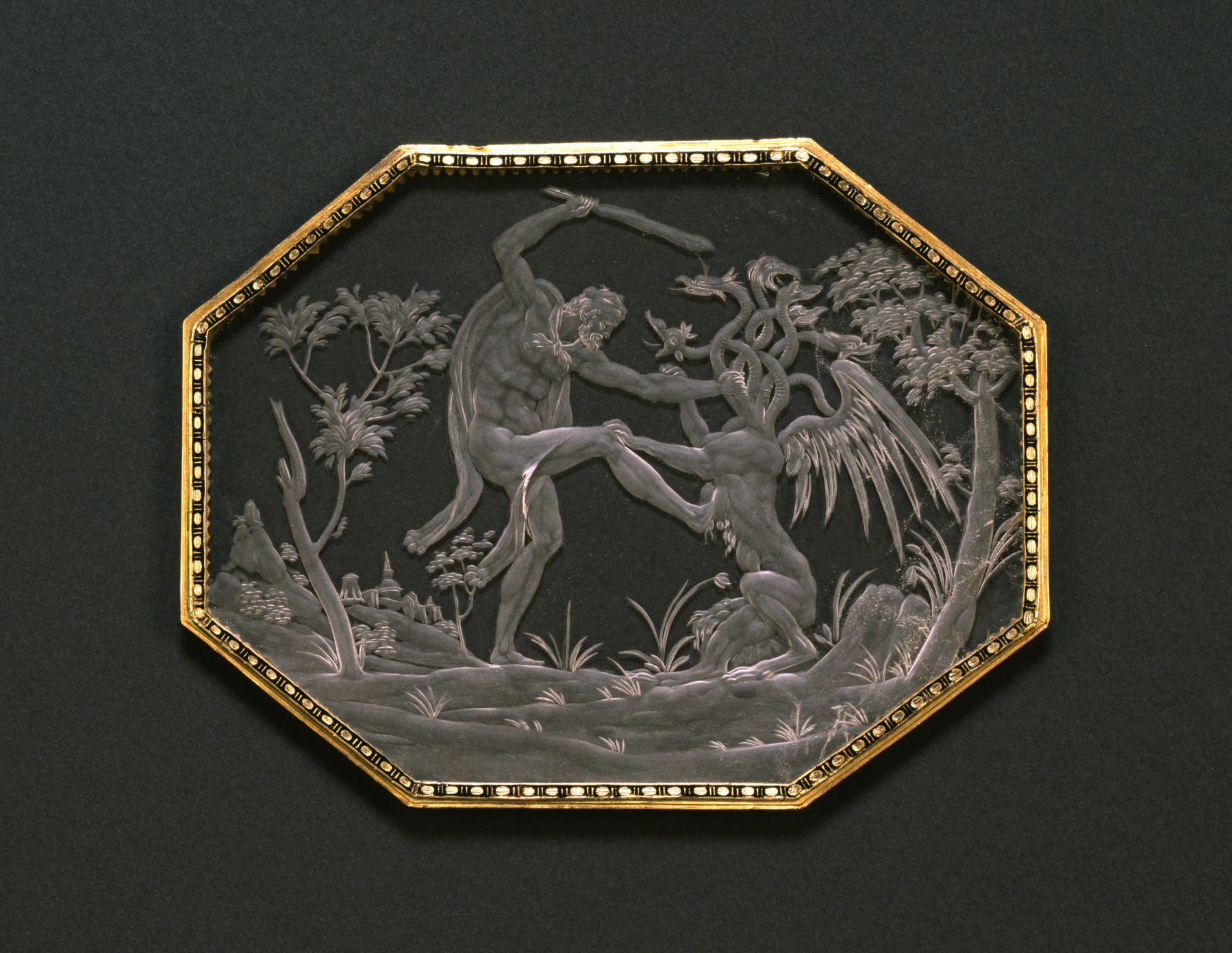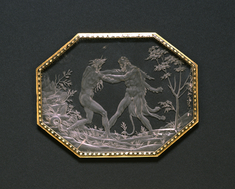Plaque with Hercules Attacking the Lernean Hydra
(Renaissance Europe )
This engraved plaque, along with Walters 41.71, show scenes from the life of the mythological hero Hercules and were initially set into a sumptuous, gilded casket that belonged to the ducal Gonzaga family of Mantua. Hercules was famous for his strength and virtue, and princes often surrounded themselves with his image as an ideal for (and an idealized image of) themselves. This scene is from the Twelve Labors of Hercules, tasks given to him by King Eurystheus, who thought they were impossible to accomplish, including killing a many-headed hydra (dragon). At some point the casket was taken apart; eight related plaques are preserved.
Hercules's powerful musculature reveals Fontana's study of ancient sculpture. His reputation as a fine engraver of rock crystal was widespread. In 1585, the duke of Savoy commissioned from him a casket decorated with plaques similar to this for Archduchess Isabella on the occasion of her marriage.
Provenance
Provenance (from the French provenir, 'to come from/forth') is the chronology of the ownership, custody, or location of a historical object. Learn more about provenance at the Walters.
Henry Walters, Baltimore [date and mode of acquisition unknown]; Walters Art Museum, 1931, by bequest.
Exhibitions
| 2002-2003 | La Celeste Galleria dei Gonzaga. Il Museum dei duchi di Mantova tra Mantegna, Rubens e Guido Reni. Palazzo Te, Mantua. |
| 1971-1972 | World of Wonder. The Walters Art Gallery, Baltimore. |
Conservation
| Date | Description | Narrative |
|---|---|---|
| 9/12/1963 | Treatment | cleaned |
Geographies
Italy, Milan (Place of Origin)
Measurements
H: 4 1/16 × W: 5 3/8 × D: 3/16 in. (10.3 × 13.6 × 0.5 cm)
Credit Line
Acquired by Henry Walters
Location in Museum
Accession Number
In libraries, galleries, museums, and archives, an accession number is a unique identifier assigned to each object in the collection.
In libraries, galleries, museums, and archives, an accession number is a unique identifier assigned to each object in the collection.
41.70



